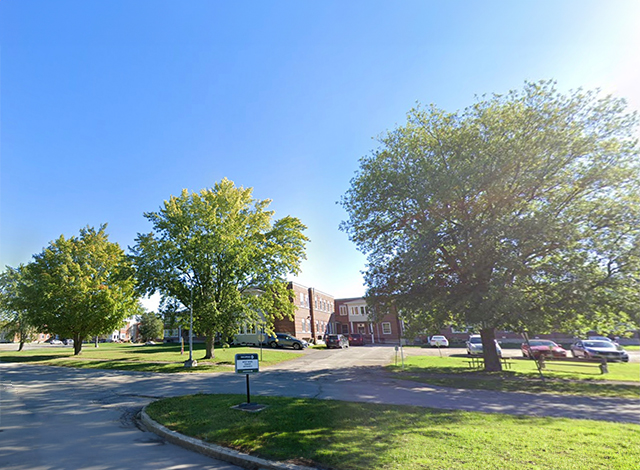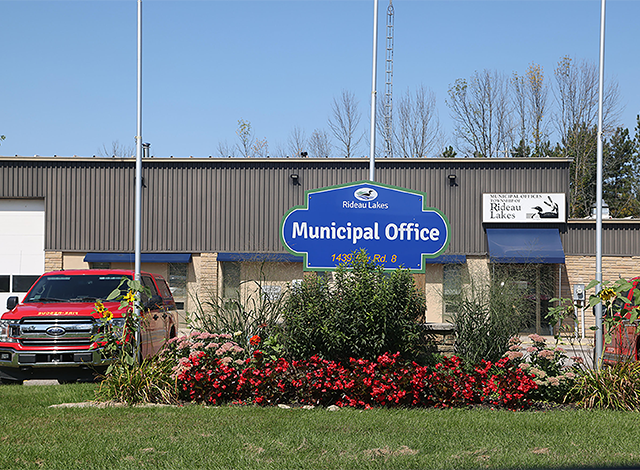LAURIE WEIR
Smiths Falls town council has voted to support the removal of the heritage easement on the Gallipeau Centre, igniting a debate over the site’s historical significance and its potential for future development.
The decision was made to support a staff recommendation on Monday, Oct. 7 during a committee of the whole meeting.
This landmark, originally the Rideau Regional Centre, represents a rich legacy while also presenting opportunities to meet the town’s urgent need for housing and economic growth.
Originally established in 1951 as the Rideau Regional Centre (RRC), the facility was once Ontario’s largest institution for individuals with developmental disabilities, peaking with over 2,500 residents. Following its closure in 2009, the site was repurposed into the mixed-use Gallipeau Centre, but a heritage easement placed by the Ontario Heritage Trust in 2011 restricts new construction and renovations, preserving its architectural and historical elements.
The current owner, TAG Gallipeau Corporation, has petitioned the town to support the removal of the easement, as it hinders the site’s redevelopment potential, particularly as demand for residential land increases. The easement is viewed as a barrier to developers considering investments in the 342-acre property, which was originally imposed as a condition of sale to the current owners due to the site’s historical significance.
While council does not enforce the easement—governed by the Ontario Heritage Act—it can request that the province consider removing it.
Mayor Shawn Pankow and other council members discussed the balance between the town’s need for new housing and economic opportunities and preserving the site’s historical significance.
In his report, Karl Grenke, Smiths Falls’ manager of development services, noted that if the easement were removed, it wouldn’t eliminate heritage protections, but it would shift authority to the town to consult and chart a way forward.
Smiths Falls’ Official Plan designates the Gallipeau Centre as a “special policy area,” allowing for flexible development, especially on the vacant lands surrounding the facility. The removal of the easement could open the door to new residential and commercial projects.
Coun. Jay Brennan voiced support for removing the easement. “I’m excited someone is interested in the property. I see no reason not to recommend to the minister that it be removed,” he said.
Pankow noted that Paul Calandra, Ontario’s minister of municipal affairs and housing, toured the town earlier that day, and the Gallipeau Centre’s future was on the agenda. Pankow said the heritage easement has impeded development for over a decade.
“This property represents the next frontier for growth in Smiths Falls, not just residential but also commercial and industrial,” he said. “The easement is a barrier.”
Not all council members were satisfied with the process. Coun. Chris McGuire expressed frustration that the municipal heritage committee wasn’t informed about the easement discussions in advance. “It’s disappointing. Our volunteers care about these issues and want to contribute,” McGuire said.
Grenke acknowledged that the Ontario Heritage Trust is open to discussions with developers, but uncertainty surrounding the easement has deterred early-stage investments. He mentioned that a forthcoming Conservation Management Plan could clarify guidelines even if the easement remains.
Coun. Peter McKenna supported the move, suggesting town policies may be better suited than the province to manage the property’s future development.
CAO Malcolm Morris emphasized that the town’s heritage committee doesn’t have authority over easements governed by the Heritage Act but noted opportunities for more dialogue if the province decides to act.
Coun. Jennifer Miller, who lived in an apartment at the Gallipeau Centre for a few years. “I know the treasure that that building holds. I don’t want to see it demolished. I think there are parts of it that tell a big story about our past and I wouldn’t want to see the whole thing come down.”
Coun. Dawn Quinn stressed the urgency of making changes before the building deteriorates further. “If something’s not done soon, it’s going to cave in,” she said.
Pankow added that the Gallipeau family, who owns the property, has struggled to maintain it, with only 25 per cent currently occupied. To his knowledge, he said parts of the property, like the derelict nurses’ quarters, are unsalvageable.
“As long as this easement remains a barrier, a sale may not occur,” Pankow said, warning that portions of the building could fall into disrepair without action.
“People are living there, and businesses are operating,” he said. “We need to ensure that this is sustainable, and this is a big step in that direction.”
The council agreed to move forward with the recommendation after a majority of councillors supported the request by the property owner to approach the Ministry of Municipal Affairs and Housing and the Ministry of Citizenship and Multiculturalism to take action to remove the Heritage Easement that has been applied to the lands of the Gallipeau Centre, according to Section 10 of the Ontario Heritage Act.















